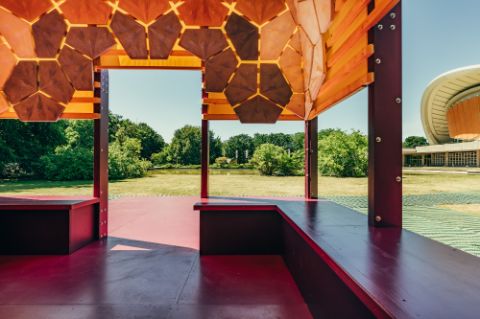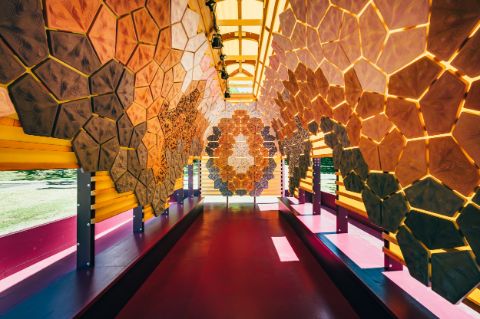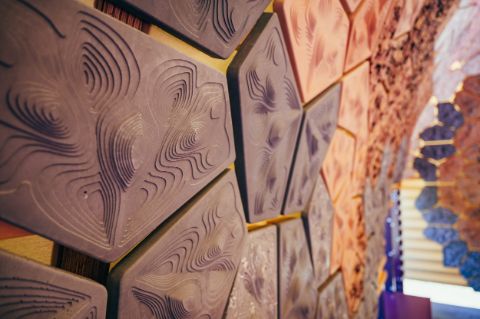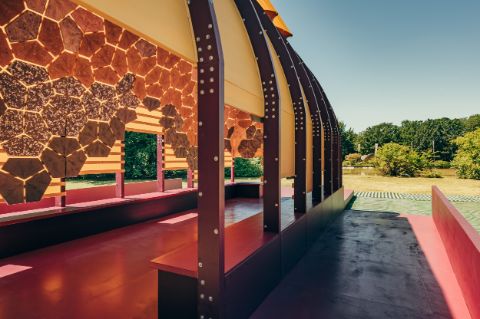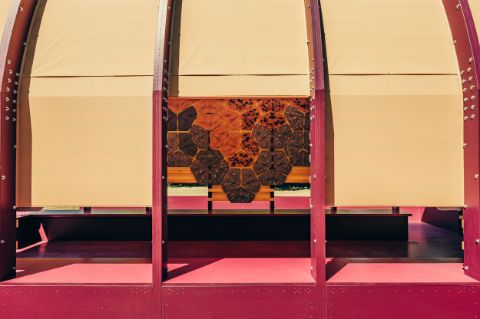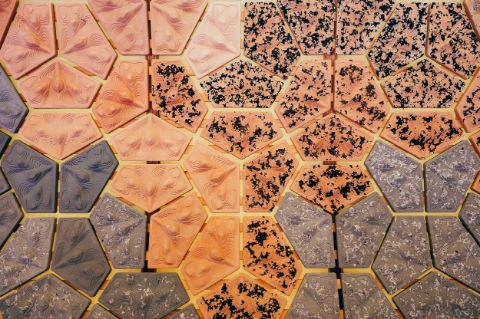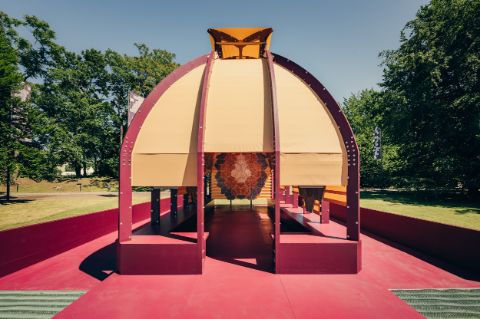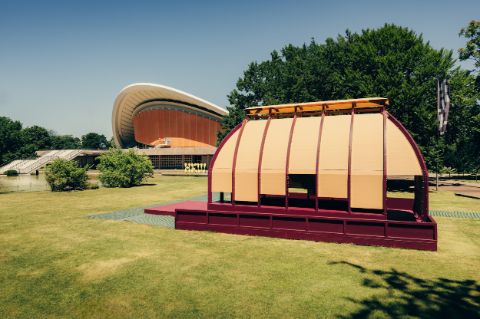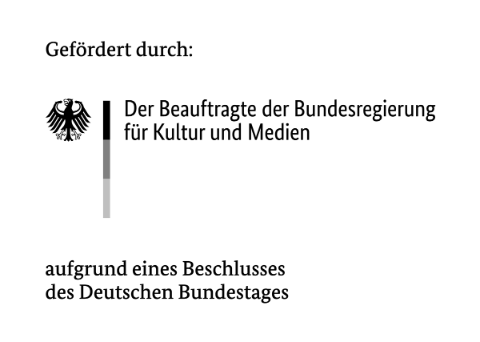Ileum
Mae-ling Lokko and Gustavo Crembil
Temporary Pavilion, 2025
The architectural series, Shaped to the Measure of the People’s Songs, continues in summer 2025 with an artistic intervention in space by Mae-ling Lokko and Gustavo Crembil.
Soil is home to the greatest number of species including not only the animal, plant, and fungi kingdoms of life but also for a broad range of materials. Seeping, eroding, diluting, mixing, filtering, storing, transporting, and sedimenting, the dynamic patterns of material migration in and out of soil horizons continuously reconstitute its territory as well as the broader ecology of human and non-human health over time. Over the past five centuries, unprecedented scales of mining, farming, and transforming materials have transformed soil ecosystems, compromising their capacity to nurture and sustain a broad range of biotic activity. Through its cataloguing of soil composite panels, the Ileum pavilion explores pluriversal roles of architecture in confronting its more recent historical indifference to soil ecosystems. Ileum draws upon Berlin’s Großes Tropenhaus (a large tropical greenhouse, located in the Botanischer Garten in Dahlem), as a reference site for repair of both soil ecosystems and contemporary building cultures. Designed by Alfred Koerner in 1905 to house over 1,400 plant species from the African, Asian, and Australian tropics, the Großes Tropenhaus remains one of the largest steel and glass structures in the world. Alongside the importation of tropical flora into the greenhouse, the highly-networked botanical and colonial enterprise invented new systems of taxonomic classification that underpinned not only the centralization and control over global plant research but lucrative commercial applications in agriculture, pharmaceutical, and energy industries.
Replacing the Tropenhaus’s self-supporting iron and glass cold frame with a timber structure, the pavilion’s panelling system is reconstituted with composites of not only biogenic materials, but a growing scale of synthetic and secondary mineral industry by-products. By-products from twenty-first century enterprises including agriculture (rice husk, fly ash), metal manufacturing (ferro-silicon alloy by-products), and renewable energy systems (recycled solar panel glass fibres) are used as substrate, binder, and additive in earthen composite panels using non-toxic and low carbon material life cycle processing.
The topographical texture of Ileum’s tactile surface panels take inspiration from aerial mapping changes in soil phenomena, recalling processes of soil accumulation, slow filtration, and the generative interaction of ‘geological communities’ both biotic and abiotic, human and non-human. In contrast to the dark brown, grey, and golden hues of the soil composite panels and the velvety white of the mycelium panels, brightly-coloured shredded cotton particles are embedded across undulating surfaces, creating softness and visual contrast. Sourced from the OR Foundation located in Ghana’s Kantamanto market, one of the world’s largest repositories for second-hand clothing, recycled cotton represents the celebration of a discarded material, once used intimately by humans to protect their bodies, line their beds, and cover their belongings. Named after the longest, critical section of the human small intestine, where a large percentage of nutrients are absorbed and remaining by-products are passed on, the pavilion proposes an open and accessible space for self-reflection, reckoning, and reimagining how architecture can participate in rebuilding soil as home.
Designers
Mae-ling Lokko
Gustavo Crembil
Architects
Frederik Fuchs (ephem)
Matthias Weis (ephem)
Design Production Team
Mae-ling Lokko
Gustavo Crembil
Oswaldo Chinchilla
Alireza Zamani Samani
Panel Manufacturing Partners
Ricehouse Benefit Corporation
Opovate Ltd.
OR Foundation Ghana
Part of heimaten, supported by the Federal Government Commissioner for Culture and the Media due to a ruling of the German Bundestag
